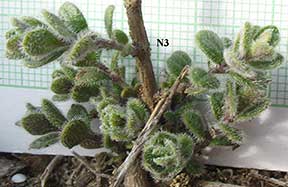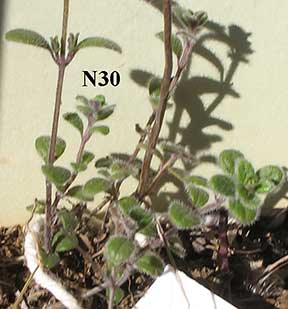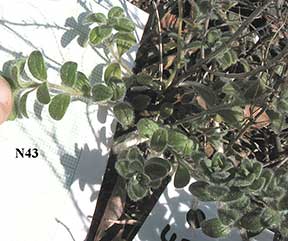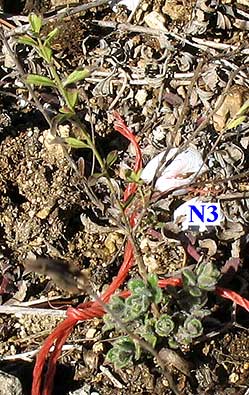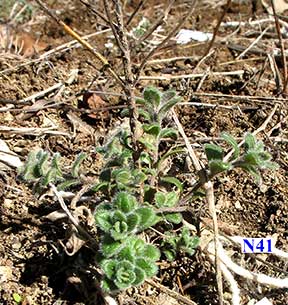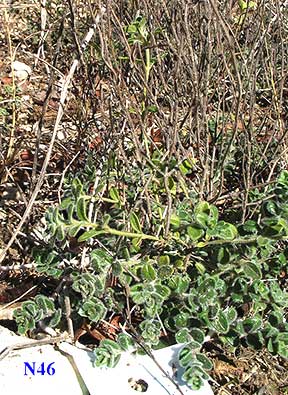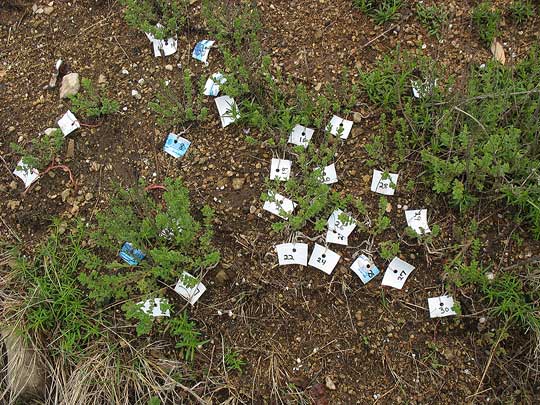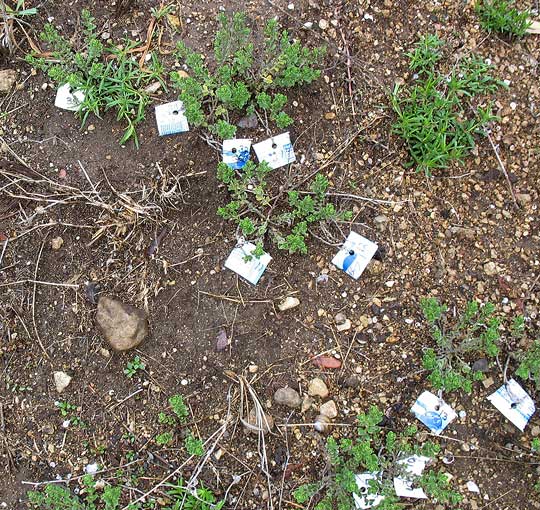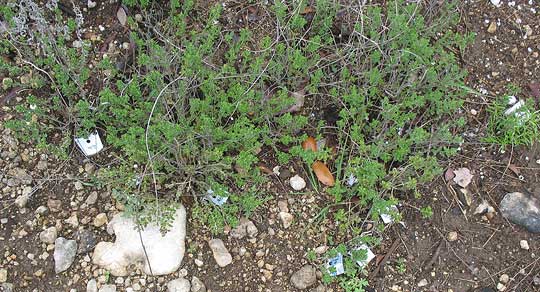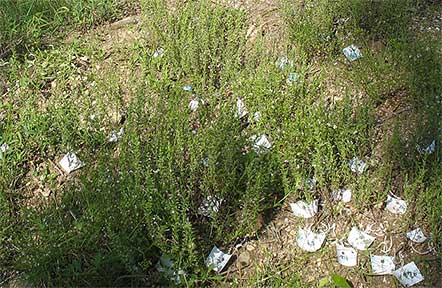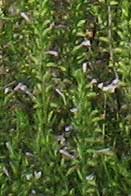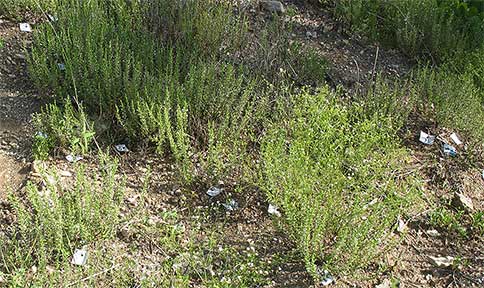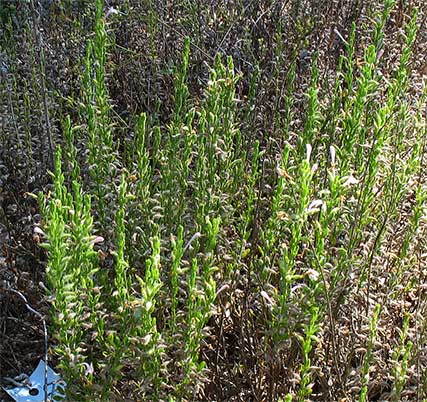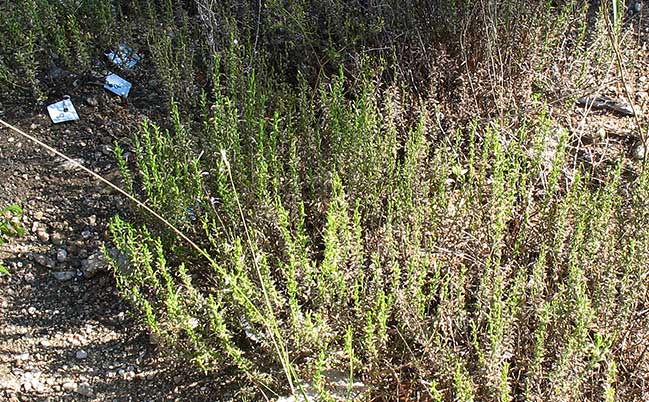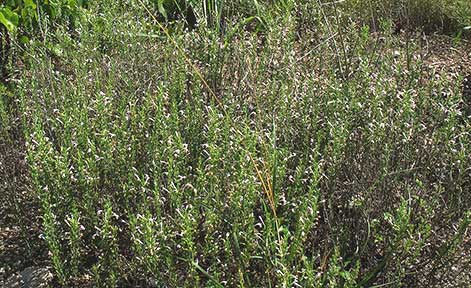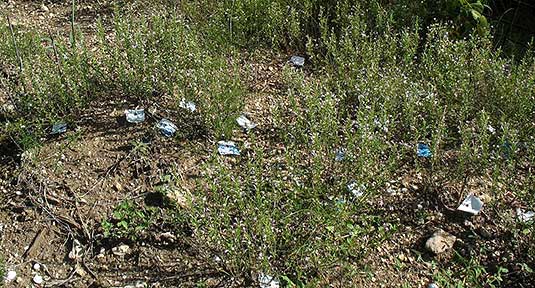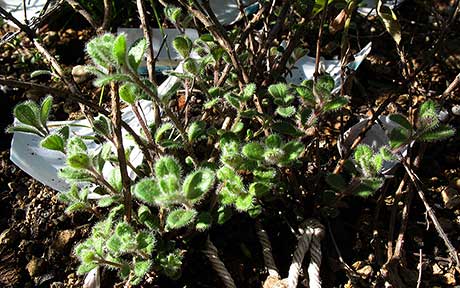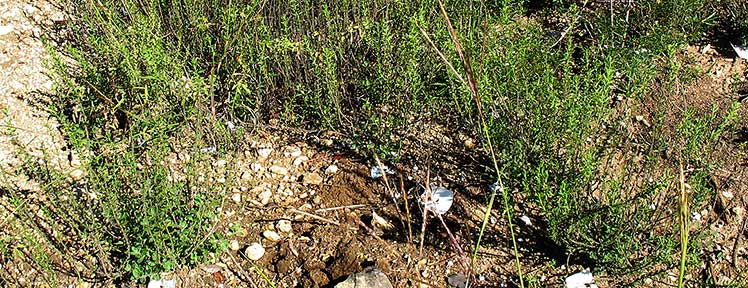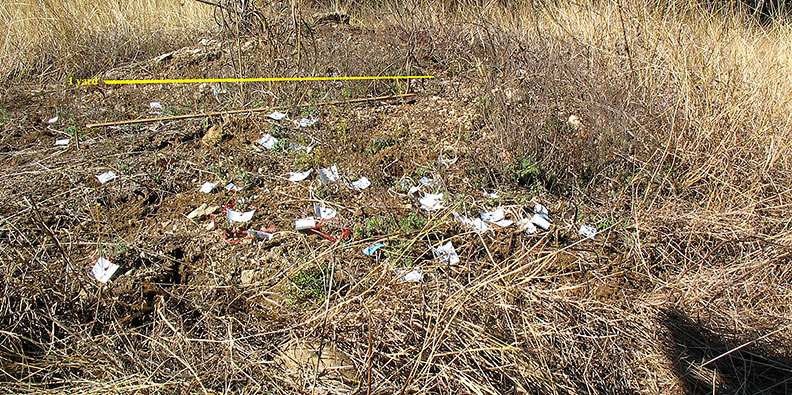
Population of H. reverchonii var. serpyllifolia with tags for 50 plants
Evidence that H. reverchonii var. serpyllifolia is a Stable Taxon
by Bob Harms

[Click any image to enlarge]
In examining the seasonal dimorphism of taxa of the H. drummondii complex, in early January 2013 I discovered a population of over 100 small H. reverchonii var. serpyllifolia plants in an area no larger than 25 square feet, on a mound of loose soil of recent origin. The soil had been extracted from the creek bottom some 40 feet away when the creek went dry in 2009. This species had not been in that location previously, so the largest plant could not have been more than 3 years old. Most, if not all, had bloomed in 2012, as determined by dried stems.
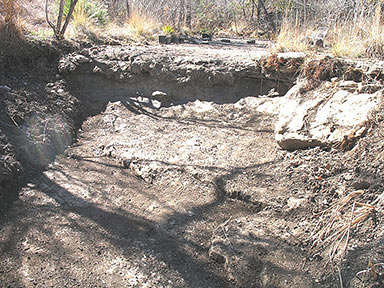
Dry pool in Deadman's Creek (N. Hays Co.), February 2009,
with silt & gravel removed down to rock bottom.
This large group of plants of common origin offered an opportunity to test the notion that H. reverchonii var. serpyllifolia is not a stable taxon, perhaps of hybrid origin. Initial inspection of these plants indicated that the only variation among them resulted from their age and perhaps minor microenvironmental differences in exposure, associated plants, position on the mound, etc. The lower cauline leaf clusters were virtually identical, almost like clones. This similarity was even more pronounced for winter leaves in March 2014.
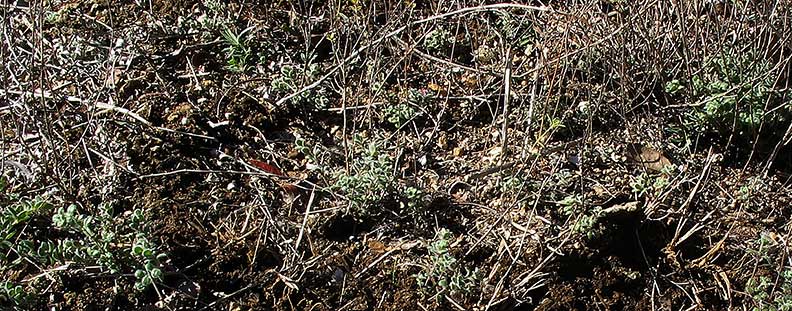
Several plants of the test population prior to tagging, 18 January 2013. Click to enlarge.
If H. r. var. serpyllifolia is of hybrid origin (apart from a remote past origin), we should expect this population to exhibit variation, some plants closer to H. r. var. reverchonii, others to H. drummondii (or with other atypical features).
A plastic numbered marker was placed on each of 50 plants, selected from east to west along the slope of the mound based soly on ease of reachability, regardless of size. At the east end they were relatively crowded compared to those on the west. Basal winter shoots at that time ranged in height from 2 to 10 centimeters (6 to 33 cm counting older, empty branches). From January 2013 through the end of March 2014 this test population was inspected and sampled. Collections of leaves or branches of the 50* were made at 4 times: (1) end of January (Jan. 23 & Jan. 31), (2) during anthesis in late May (May 18 & May 22), (3) late October, with onset of fall dimorphism (Oct. 23 & Oct. 27) and (4) March 11, 2014. These collections were scanned at 2400 dpi, permitting detailed measurements. On three occasions close-up photos were taken for series of every fifth plant: (1) April 28 (N1 .. N6, etc.), June 15 (N3 .. N8, etc.), July 3 (N2 .. N7, etc.). Group photos were made regularly.
*In the course of the investigation six of the plants died, several after being dug up by an armadillo, two were pulled out by accident in attempting to separate the stems tangled by stiffly hooked hairs for photographing. Immediately adjacent plants were then substituted for these. By October the numbers on all but 14 markers had vanished, and several markers had come loose. With the October collection, the original 44 plants plus 6 immediately adjecent plants were collected (both an older green branch and a newly formed winter–form shoot).
The Jan. 23 & Jan. 31 Collection
On Jan. 23 & Jan. 31 a winter leaf was randomly collected from each plant from the upper part of a winter shoot and measured. If a plant still had a few fall leaves, one of these was also collected. Additionally a photograph of each plant was made at that time. Although this random leaf collection supported the view that variation was minimal, collecting only a single leaf was a difficult task. Both plants and leaves were small and I was anxious not to disturb the plant. My overall impression was that much of the variation resulted from the arbitrary selection of leaves.
6 photos taken the last week of January. N3 was significantly smaller than N43 & N46. Click to enlarge.
3 areas of the test population, 4 April 2013. Plants in more crowded areas did not grow as large. Hedyotis nigricans is a common associate. Click to enlarge.
Onset of anthesis, 18 May 2013. The larger pale lavender flowers are Hedyotis nigricans. Click to enlarge.
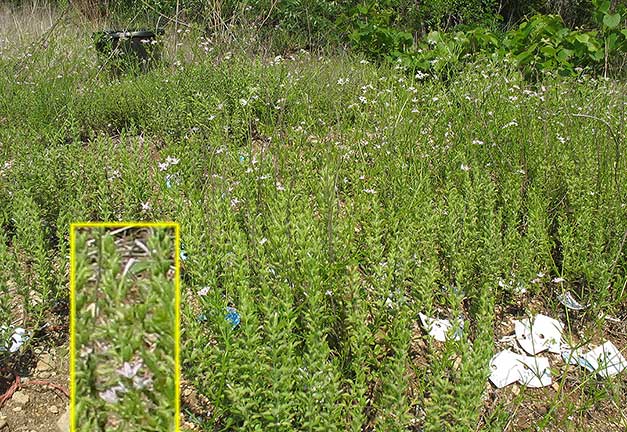
Gallery of detailed scans for every 5th plant — N4 .. N9 .. N14, etc.; 18-22 May 2013. These were scanned at 2400 dpi and reduced. Clicking on the larger image in the gallery will produce a very large image of a detail showing the calyx teeth orientation, calyx hair pattern, and leaf form (for example).
Full anthesis, 15 June 2013. Click to enlarge.
Looking dry, mid–summer drought; 10 July 2013. Click to enlarge.
Continuing to bloom after late summer rains; 3 Aug. 2013. Click to enlarge.
First winter leaves emerge 25 Sept. 2013, following (1) cold nights, (2) abundant moisture, (3) fall equinox — what is the trigger? Click to enlarge.
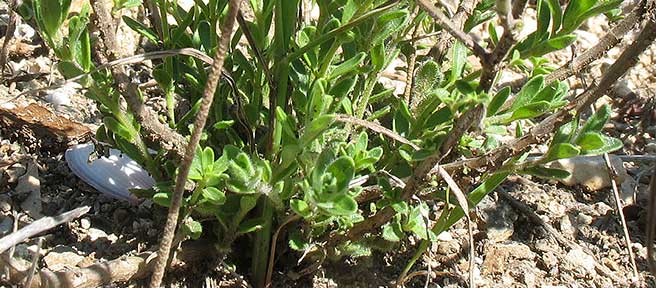
By mid October all plants had both summer and winter shoots, and flowers appeared to be cleistogamous. Click to enlarge.
Gallery for 10 plants 23-27 October 2013. Since most plant ID markings had been lost to rain & sun, an attempt was made to mimic a 50 plant series (N5, N10, N50 were still marked, as was N41; others were arbitrarily numbered but were roughly in the same locations as missing IDs (i.e., #5, #9, #25, #29, #30); one was taken from the same general area as a plant that had died [#s46]. Many plants had cleistogamous corollas with tubes that remained closed (in the gallery all but #25 & #29). Dissected tubes had developed seeds. No plants had open corollas. The calyx tube of all plants exhibited trichome pattern distinctive for H. r. s., although the hairs were shorter than with spring & summer plants. All plants in the test group had several winter–form shoots. The top window of the gallery provides links to an enlarged detail of the shoot with calyxes (example for N41) and of winter leaves (example for N41).
Plant Resources Center Home Page — Flora of Texas
— Hedeoma





